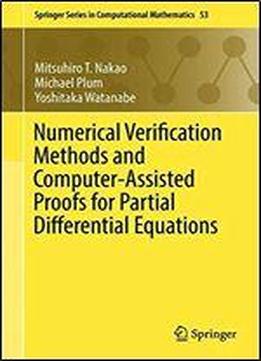
Numerical Verification Methods And Computer-assisted Proofs For Partial Differential Equations
by Mitsuhiro T. Nakao /
2019 / English / PDF
13 MB Download
Recently, various mathematical problems have been solved by computer-assisted proofs, among them the Kepler conjecture, the existence of chaos, the existence of the Lorenz attractor, the famous four-color problem, and more. In many cases, computer-assisted proofs have the remarkable advantage (compared with a theoretical proof) of providing accurate quantitative information.The authors have been working more than a quarter century to establish the verified computations of solutions for partial differential equations, mainly to the nonlinear elliptic problems of the form -u=f(x,u,u) with Dirichlet boundary conditions. Here, by "verified computation" is meant a computer-assisted numerical approach to proving the existence of a solution in a close and explicit neighborhood of an approximate solution. Therefore, the quantitative information by the technique shown here should also be significant from the viewpoint of the a posteriori error estimates for approximate solution of concerned partial differential equations with mathematically rigorous sense.In this monograph, the authors describe a survey on the verified computations or computer-assisted proofs for partial differential equations that they developed. In Part I, the methods mainly studied by authors Nakao and Watanabe are presented. These methods are based on the finite dimensional projection and the constructive a priori error estimates for the finite element approximation of the Poisson equation. In Part II, the computer-assisted approaches via eigenvalue bounds developed by the second author, Plum, are explained in detail. The main task of this method consists of eigenvalue bounds for the corresponding nonlinear problems of the linearized operators. Some brief remarks are also given on other approaches in Part III. Each method in Parts I and II is followed by appropriate numerical examples that confirm the actual usefulness of the authors methods. Also in some examples the practical computer algorithms are supplied so that readers can easily implement the verification program by themselves.











